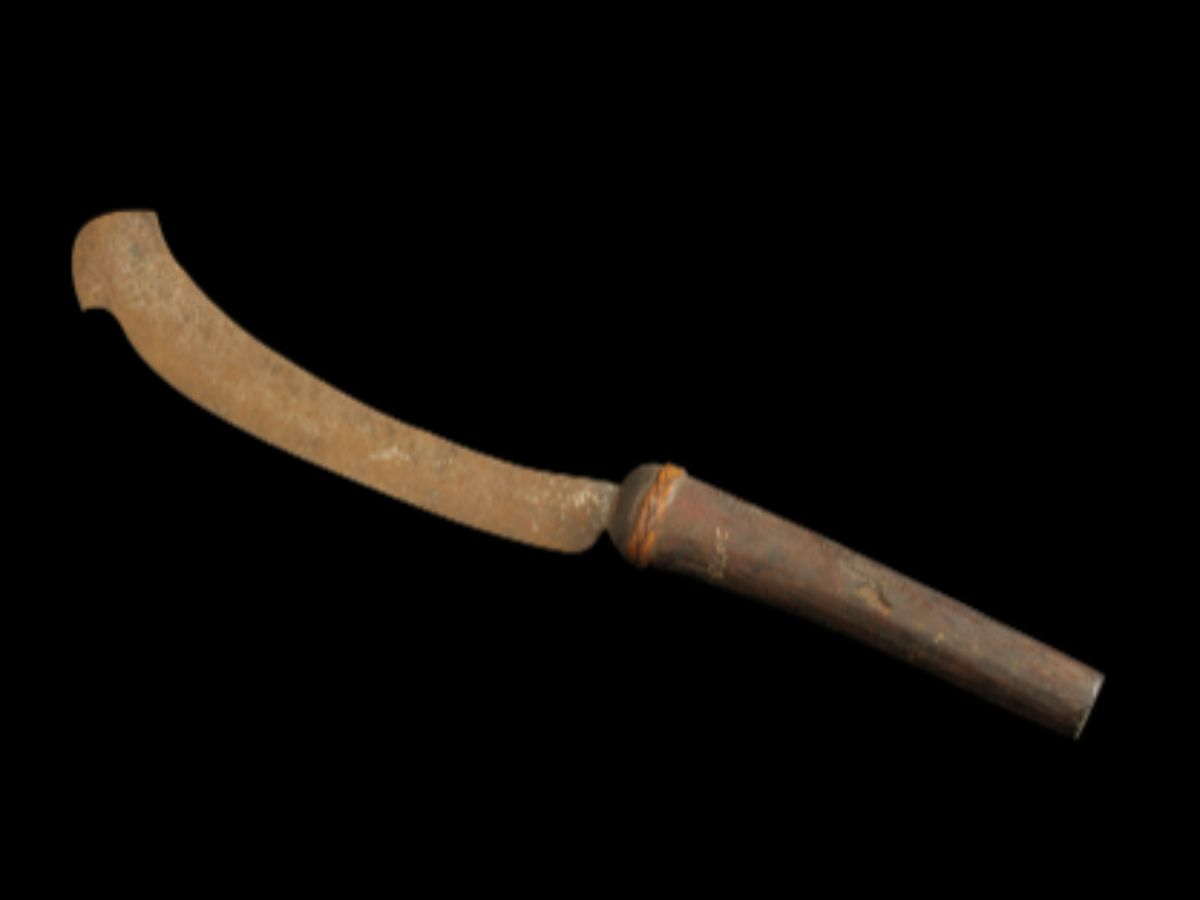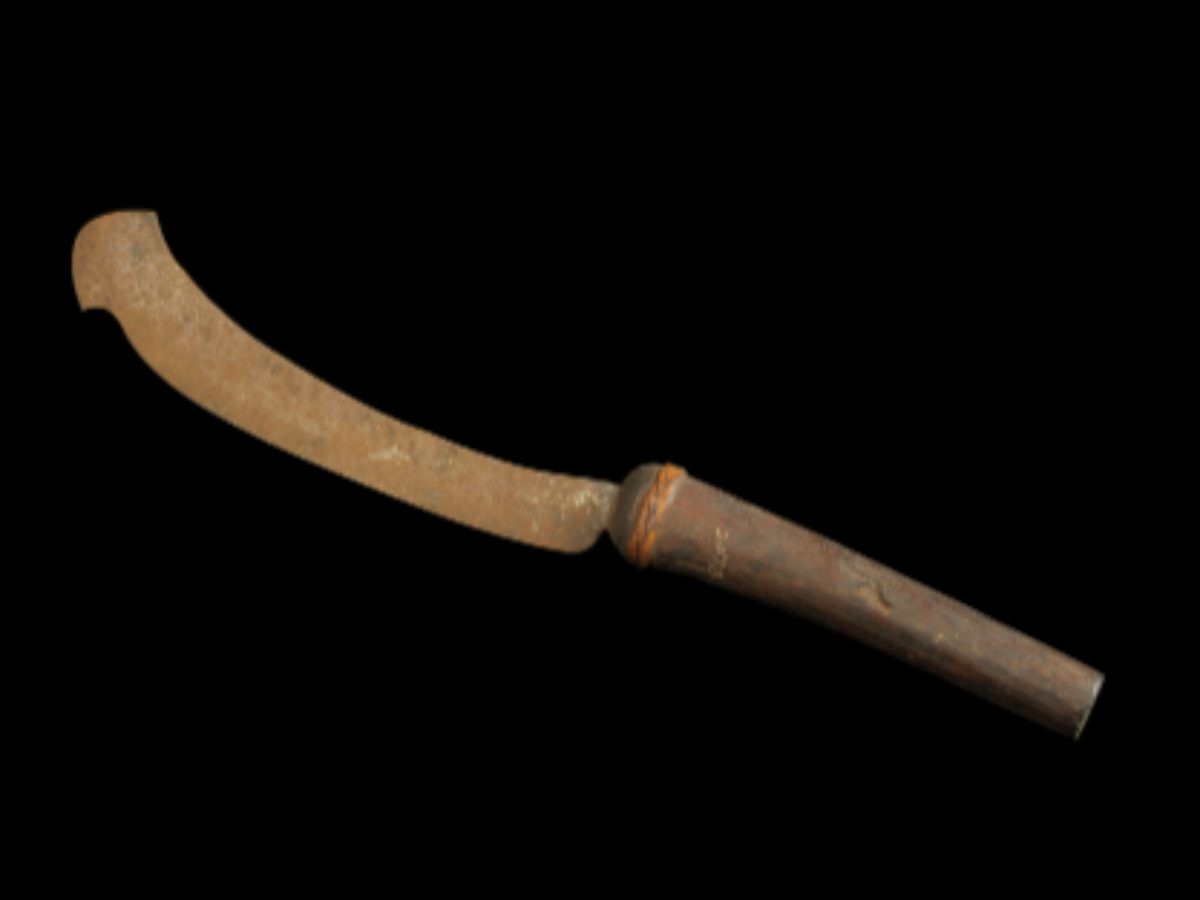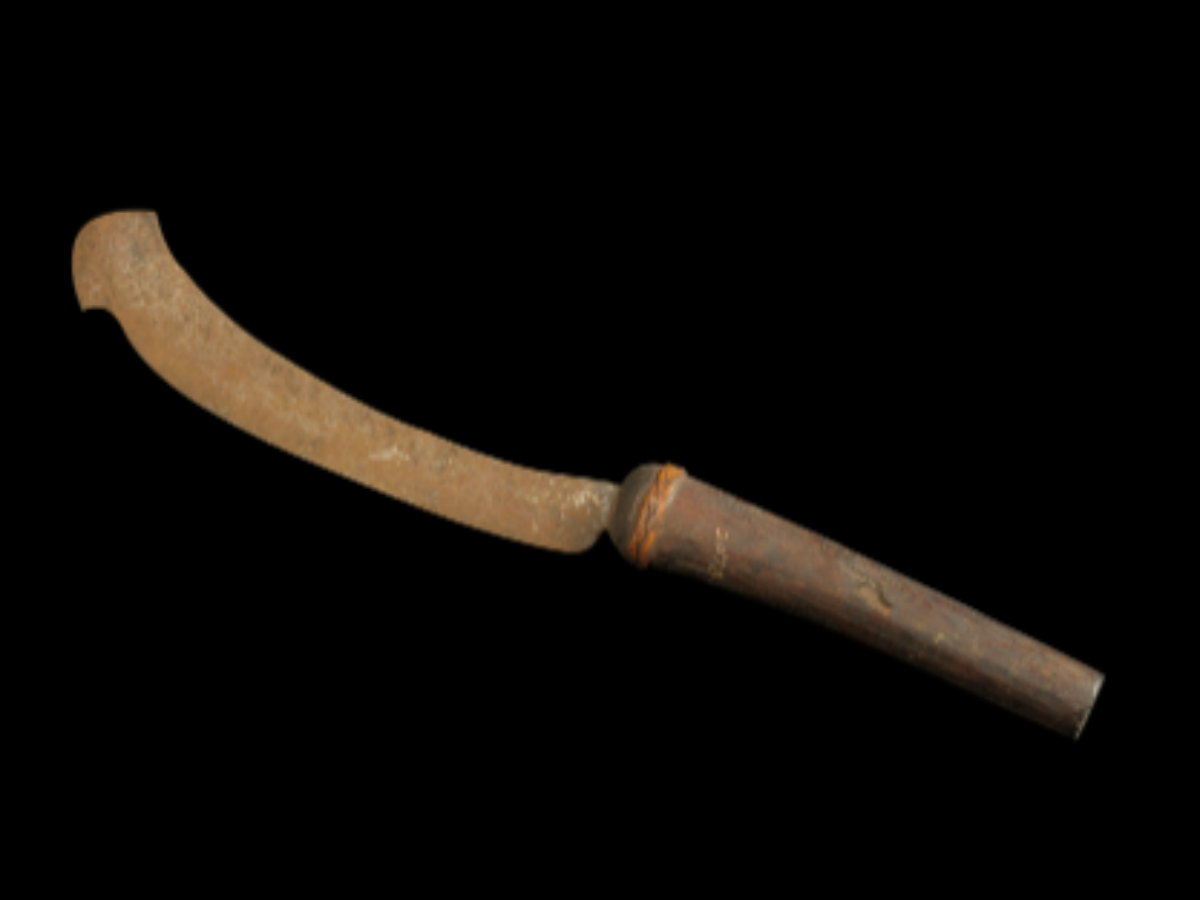State
Tribe Name
Art Type
short description
The Ka-Wait Prat, also known as the Pruning Dao, is a traditional cutting implement from the Khasi tribe of Meghalaya. This tool represents the deep insight of the community into practical design, forged for daily use in agriculture and forest-based living. It has a curved iron blade with a cutting edge shaped like a semi-circle that is immediately sharp for pruning through vegetation, small branches, and underbrush. The blunt edge is also curved, giving it a balanced form and weight. The blade is attached to a handle of wood that is cylindrical yet slightly flat, grip stability and comfort being thus afforded for control over movement. A plaited cane band is wound about the top part of the handle, reinforcing the structure where the blade's tang is inset into it, as well as representing a traditional decorative feature. The tool’s curvature and ergonomic handle speak to the Khasi people's close relationship with nature, where such implements play a vital role in sustainably-evolved livelihood. Much of this tool is still used in some rural areas today; however, it is largely recognized as an ethnographic artifact of the workmanship and cultural heritage of the Khasi.
Thumbnail

Filter Postion
Left
Filter Background
Off
Theme
Filter Header Image

content
Image

description
The Ka-Wait Prat, also known as the Pruning Dao, is a traditional cutting implement from the Khasi tribe of Meghalaya. This tool represents the deep insight of the community into practical design, forged for daily use in agriculture and forest-based living. It has a curved iron blade with a cutting edge shaped like a semi-circle that is immediately sharp for pruning through vegetation, small branches, and underbrush. The blunt edge is also curved, giving it a balanced form and weight. The blade is attached to a handle of wood that is cylindrical yet slightly flat, grip stability and comfort being thus afforded for control over movement. A plaited cane band is wound about the top part of the handle, reinforcing the structure where the blade's tang is inset into it, as well as representing a traditional decorative feature. The tool’s curvature and ergonomic handle speak to the Khasi people's close relationship with nature, where such implements play a vital role in sustainably-evolved livelihood. Much of this tool is still used in some rural areas today; however, it is largely recognized as an ethnographic artifact of the workmanship and cultural heritage of the Khasi.
Image Mode
landscape
promoted
On
Verified
Off
